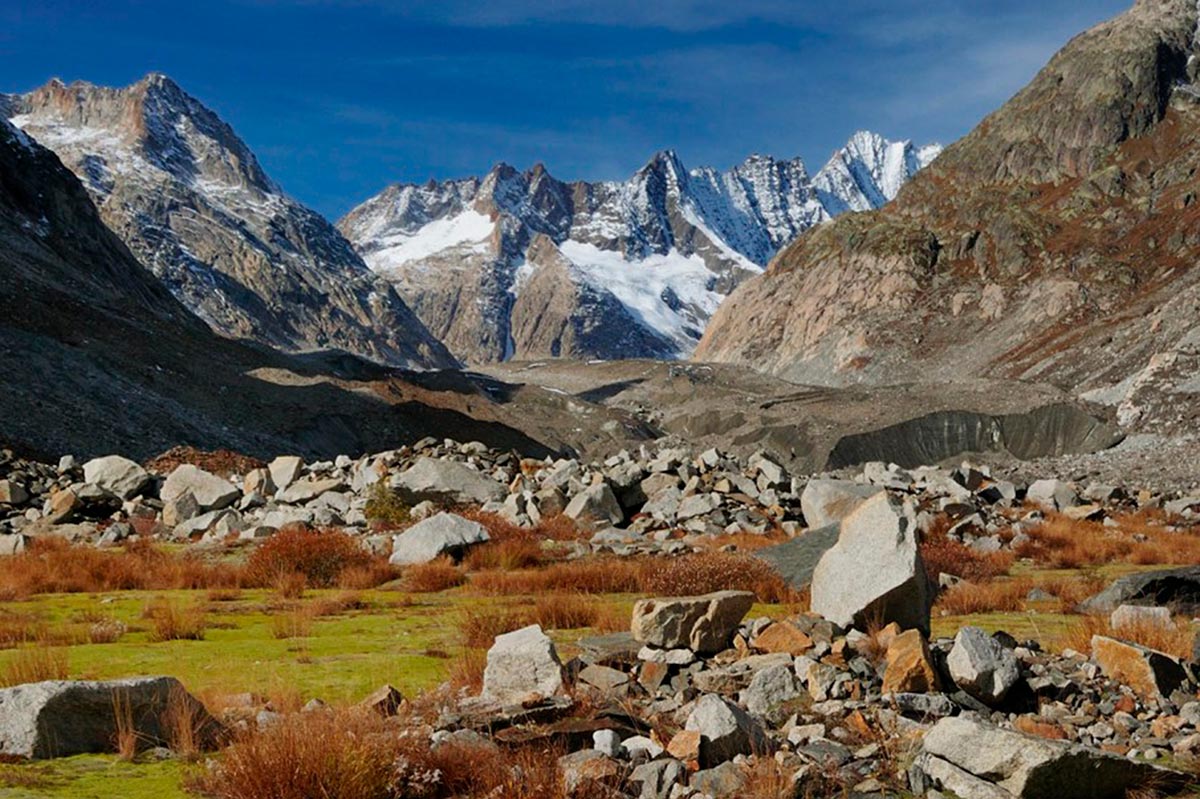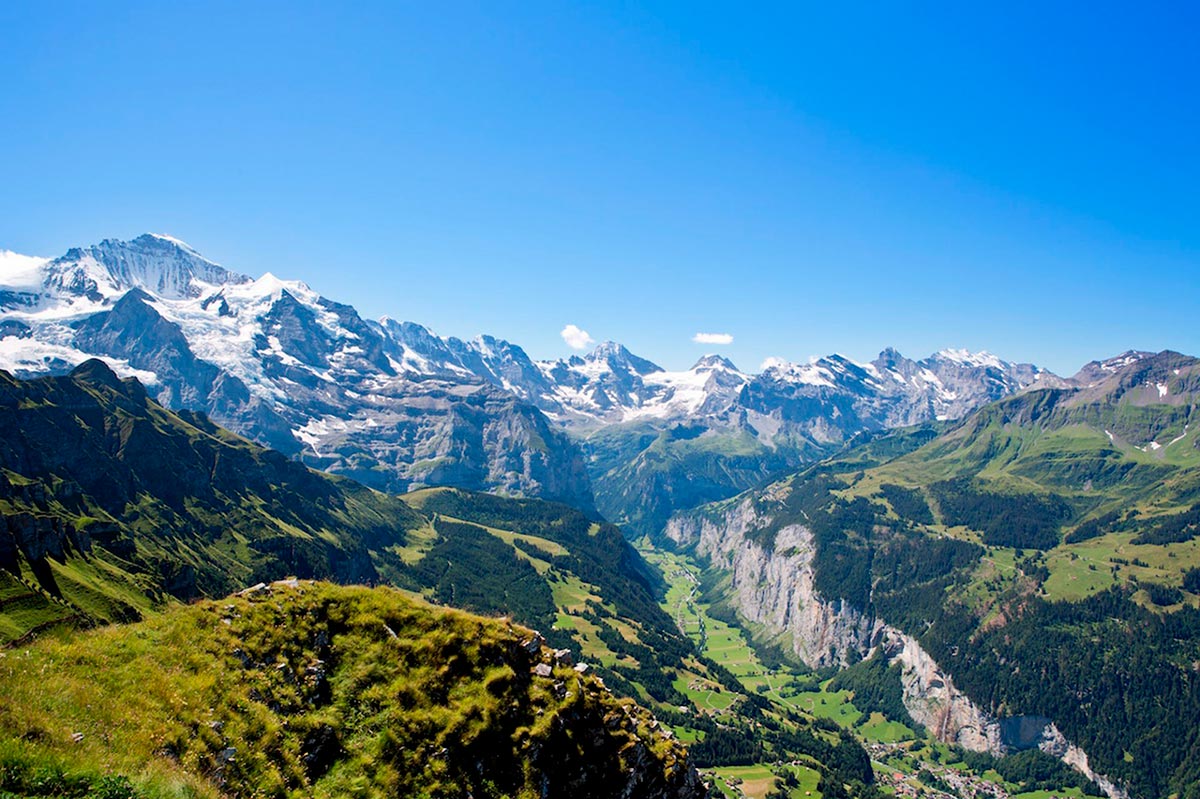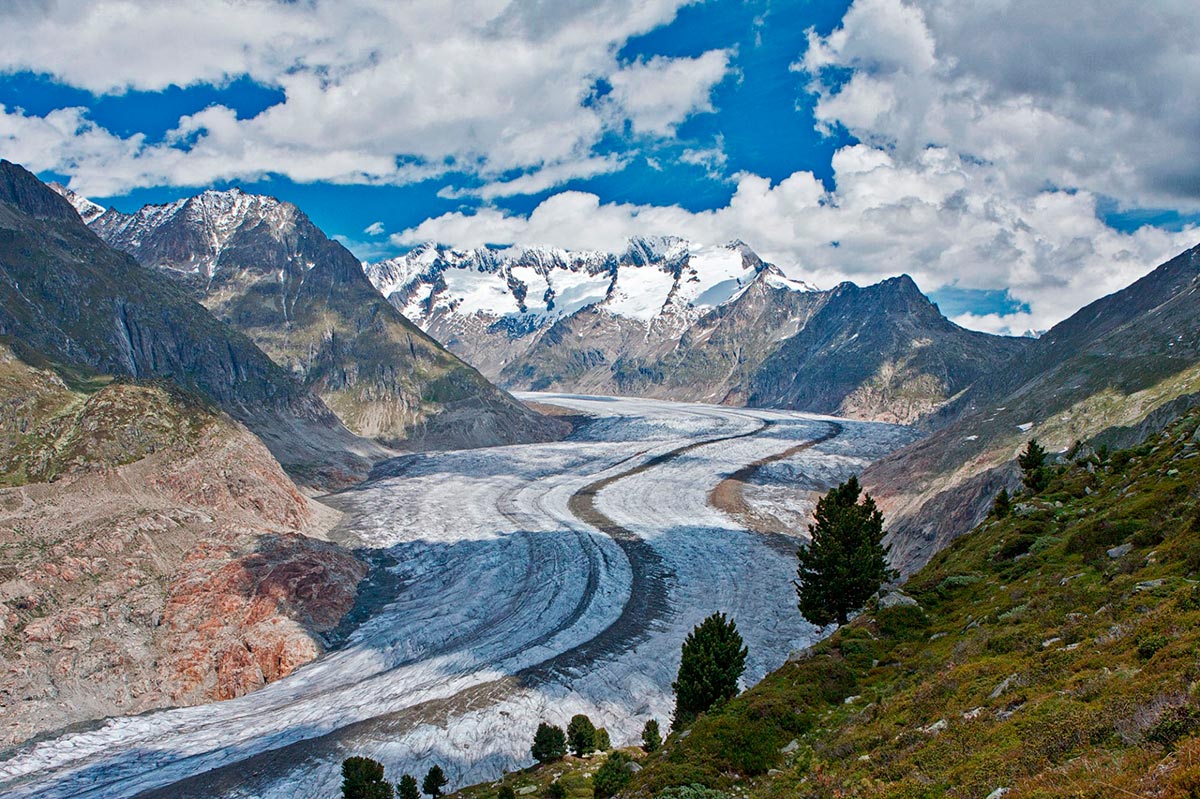Natural Landscapes
The gold yellow pine-larch forests, the sparse rocky steeps, the picturesque bog landscapes and permanently changing glacier fore fields are examples of 19 different alpine and subalpine habitats occurring in the World Heritage property. The diversity of the natural landscapes depends on factors like high altitudinal gradients and climatic differences. The mosaic of natural landscapes combined with adjacent cultural landscapes is responsible for the rich Biodiversity. It is, compared to the whole country, above average and of inestimable value. Every creature is contributing to the ecological equilibrium which helps to keep rivers clean and soils productive. Unique for the World Heritage is also the fact that the whole succession of the vegetation is visible – from the first pioneer plants in the glacier forefield to the thick forest.
A large part of the World Heritages property is listed in the Federal Inventory of Landscapes and Natural Monuments of National Importance, which includes the most important landscapes of Switzerland. Considering the rich diversity of habitats it is not surprising that approximately 700 out of 3600 endangered or rare species in Switzerland can be found in the World Heritage Region.
The Management Centre of the UNESCO World Heritage Swiss Alps Jungfrau-Aletsch is committed to protect in a long term the unique natural landscapes and the inestimable value of its biodiversity. The endangered species and habitats of significance for the site’s worth to be conserved, were defined in cooperation with local experts. Once the need for action is identified, projects for the protection of species or the restoration of habitats are launched and realized in operations, e.g. together with volunteers. The communication and awareness rising campaigns for local people and guests are decisive for the success beside the implementation of measures.








